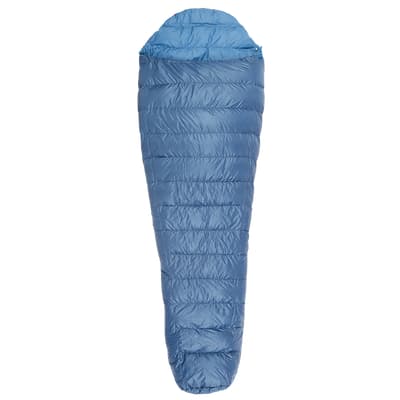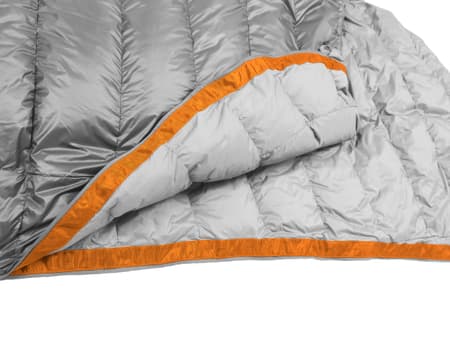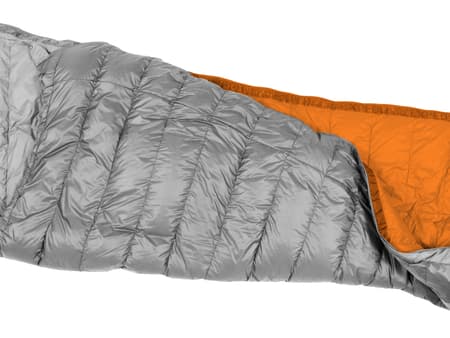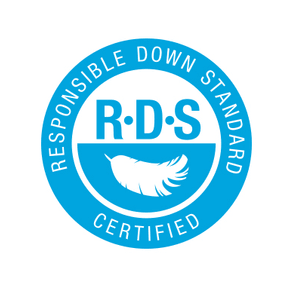


The anti-snag stiffener ensures smooth operation of the zipper.

The different shaped cord ends on the hood closure cord allow the user to easily feel and adjust the hood closure.

The Square shape allows for wriggle room at the foot end.

The drawcord hood prevents heat from escaping.

Glow in the dark zipper puller
Product Description
The Trekkinglite Summer is a lightweight down sleeping bag with super small pack size. It is ideal for trips in mild summer temperatures.
The wrap-around zipper allows this sleeping bag to be quickly and easily converted into a blanket. With small, convenient inner pocket.
Both shell and liner are PFC-free and only RDS certified down is used as filling.


Weight
L: 21.9 oz
Fill weight
L: 9.3 oz
Shape
Length
L: 85.8 in
Shoulder width
L: 60.2 in
Foot width
L: 39 in
Body size
L: < 77 in
Packed Dimensions
L: 9.1 x 4.7 x 5.1 in
Delivery contents
Packsack
Mesh storage bag
Color Inside
Zipper variant
Shell Fabric
Oeko-Tex® 100 certified
PFAS free
Liner
Oeko-Tex® 100 certified
PFAS free
DWR free
Fill
RDS certified
Oeko-Tex® 100 certified
PFAS free
Product with Climate Contribution
EXPED calculates all climate emissions from the production and transportation of this product and finances certified climate protection projects through myclimate to an equal extent.
Responsible Down Standard (RDS)
RDS is the strictest standard for animal welfare in the production of down. EXPED uses 100% certified down in all down products.
Oeko-tex certified material
Oeko-Tex® is a testing and Certification system for raw materials and finished products. All materials of this product which are accordingly labelled are tested and certified according to the Oeko-Tex® standard.
Made without PFAS
All EXPED textile products are made without intentionally added PFAS since 2025. We work closely with suppliers and perform independent tests to ensure our products contain zero PFAS.
The EN (European Standard) rating is a standardized test that aims to set measurable targets and standardize temperature claims for sleeping bags. It is designed to help the consumer make an informed decision by using independently derived temperature values. Each EN sleeping bag test has four temperature ratings: Upper Limit, Comfort, Lower Limit, and Extreme. The three most common ratings are the following temperature ranges: Comfort, (Lower) Limit, and Extreme.
For these measurements, it is assumed that a “standard man” is 25 years old, 1.73 m tall, and weighs 73 kg; a “standard woman” is 25 years old, 1.60 m tall, and weighs 60 kg.
- Comfort: the temperature at which an average woman can expect to sleep comfortably in a relaxed position.
- Limit: the temperature at which an average man can sleep comfortably for eight hours without waking up.
- Extreme: the minimum temperature at which an average woman can tolerate severe cold exposure for six hours. There is a risk of damage to health (no danger of death from hypothermia, but frostbite is theoretically possible).
Most companies advertise the Limit rating for men's sleeping bags and the Comfort rating for women's.
It is best to store the sleeping bag in the mesh storage bag provided. This will ensure that the insulation retains its maximum bulk and thermal performance. When traveling, it is okay to compress the sleeping bag and carry it in the included stuff sack.
When you return from a trip, it is very important to let your sleeping bag dry completely. Then store it in the mesh storage bag in a dry and temperature controlled place.
If you wash your sleeping bag too often, the insulation can suffer (down or synthetic). The insulating power may decrease. We recommend cleaning the sleeping bag with a damp sponge. If the sleeping bag needs a more thorough cleaning, use only a front-loading machine (no agitator!) and a special detergent from Nikwax or McNett.
Before you put the bag in the washing machine, close the zipper. Use a cold water and gentle wash cycle, and after the wash cycle is complete, run a second rinse cycle without detergent. This will ensure that all detergent residue is removed. Two spin cycles will help get a lot of moisture out of the sleeping bag.
It is best to hang the sleeping bag afterwards and air dry it. Keep massaging the sleeping bag the down tufts apart. Depending on the humidity, it may take several days to dry completely. If you need to dry it faster, use a tumble dryer on low heat (often there are special down drying programs). To loosen up the down in the dryer, you can put some tennis balls in the dryer with it.
